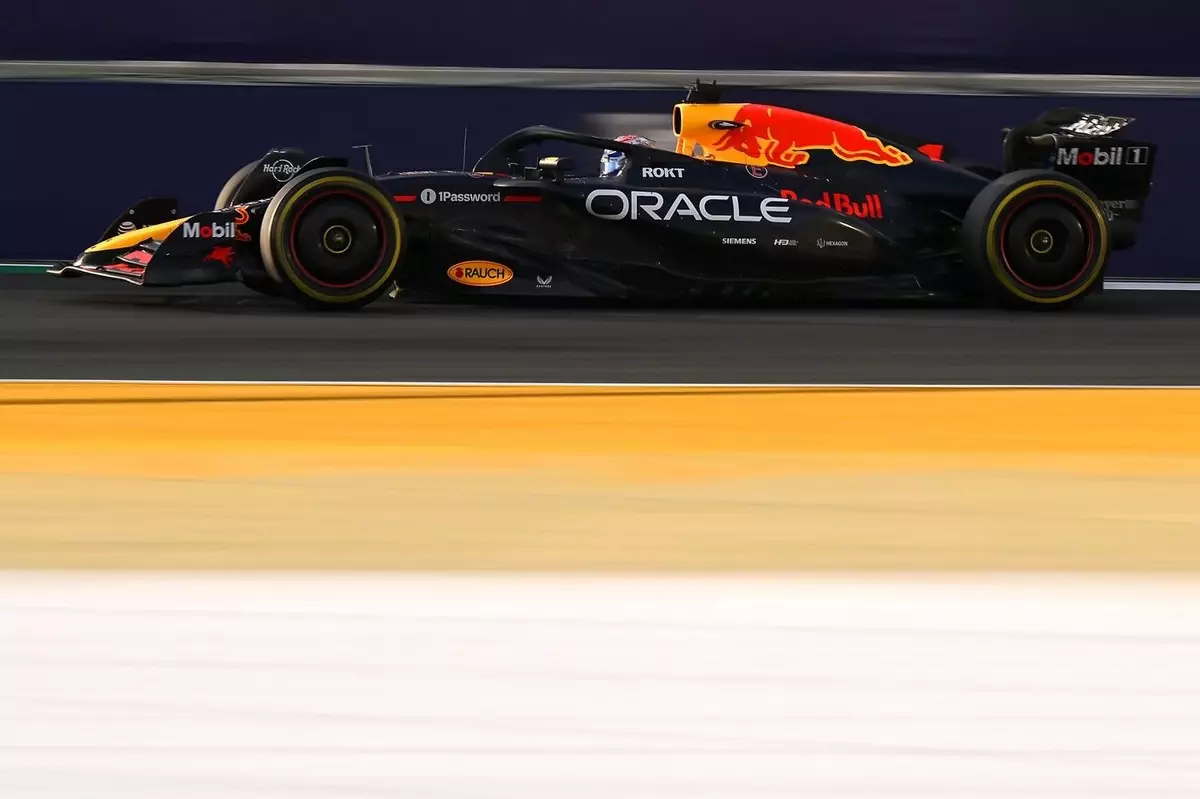In the fraught and competitive world of Formula 1, perceptions can shift dramatically in the blink of an eye. Red Bull Racing, often viewed as the powerhouse of the sport, is currently shrouded in an air of uncertainty that is difficult to ignore. The very mention of “crisis” is met with skepticism from team principal Christian Horner, who appears eager to downplay concerns about the team’s performance. However, the recent development of an emergency summit involving key figures such as Helmut Marko and Christian Horner raises questions about whether all is well beneath the glossy surface of this storied team.
At the heart of the matter is the disconnect between Red Bull’s simulation results and actual performance on the track. Horner’s insistence that such strategy sessions don’t denote panic may be more of a public relations exercise than an accurate reflection of internal tensions. After all, when powerful names in the team convene so urgently, it indicates a level of unease regarding car performance, an unease that could impact not just race results but the championship aspirations of one Max Verstappen, who finds himself mired in a tighter championship battle than anticipated.
What Happens When Assumptions Falter?
The complexity of F1 technology means that teams often find themselves caught in a quagmire when their well-established assumptions about car performance are challenged. For Red Bull, the loss of correlation between their simulations and the real-world performance of the RB21 is alarming. When every millisecond counts in this sport, even a slight deviation can mean the difference between pole position and a mid-pack struggle. Current observations suggest that while Verstappen may have obtained a surprise victory in Japan, the underlying problems with their car have not magically resolved themselves.
Rather than dismissing their struggles, Horner has somewhat begrudgingly admitted that issues arise from societal and mechanical pressures, including an ‘aged’ wind tunnel that is a stark reminder of Red Bull’s historical roots as Jaguar Racing. In the world of cutting-edge engineering, your tools can either empower or constrain your performance, and the reluctance to adapt to new technologies could prove detrimental, especially when rival teams are racing ahead in their development cycles.
The Ticking Clock of Development
With the clock ticking and the team facing mounting pressure, the real question becomes whether the developments Red Bull are pursuing will prove effective. As they aim for financial prudence alongside performance gains, the balancing act becomes trickier. The team must weigh expectations against the backdrop of evolving regulations, which impose limitations on how teams can manipulate car performance.
Aerodynamics in Formula 1 is not simply about creating fast cars; it is also about achieving repeatability in successful designs. If wind tunnel data is compromised by external factors such as temperature fluctuations, it calls into question the reliability of the foundational work. The interplay between computational fluid dynamics and real-world performance serves as the backbone for any successful race strategy, and Red Bull’s struggle with correlation indicates a critical failure point that other teams surely notice and capitalize on.
The Psychological Toll on Drivers
While the technical issues mount, the psychological burden on drivers like Verstappen cannot go unnoticed. It is one thing to pilot an efficient machine; it is quite another to grapple with uncertainty about the very vehicle’s capabilities. As Verstappen fights not just against other racers, but also against an erratic car, his patience may wear thin. The psychological impact of knowing your equipment may not provide the necessary response at the right moments could lead to uncharacteristic errors or hesitations in strategy.
When expectations collide with unpredictable performance, tension inevitably rises. Verstappen’s challenges manifest not only on the scoreboard but also through his demeanor, affecting team morale. Successful championship contenders must navigate both mechanical and psychological hurdles, and the weight of unresolved issues could create fissures within the team’s cohesive fabric.
An Uphill Battle for Redemption
As Red Bull braces itself for a challenging season ahead, the entire organization must face a critical question: will they evolve or remain stagnant? The choice to build a new wind tunnel demonstrates a commitment to long-term improvement. Still, the question of whether they can reignite their competitive edge against formidable opponents is an uphill battle fraught with complexities. The allure of Formula 1 lies not only in its speed but in the constant drive for innovation. Failure to adapt could mean they find themselves less at the front and more at risk of falling behind.
Thus, the narrative surrounding Red Bull Racing is one of urgent introspection and a fight against complacency. While Horner might wish to deflect attention from the term “crisis,” the implications of their internal debate resonate throughout the paddock. It is a reflection of the precarious nature of competition at this level, where the ascent to greatness is continuously balanced on the knife-edge of technological superiority and human resilience.


Leave a Reply